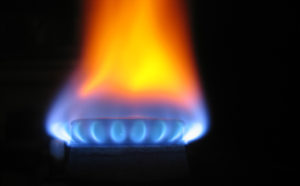 Natural gas shifted between gains and losses on Tuesday, following up on a volatile session on Monday, as weather forecasts continued to call for diverging conditions across different parts of the US, while data for the second week of July remained inconclusive.
Natural gas shifted between gains and losses on Tuesday, following up on a volatile session on Monday, as weather forecasts continued to call for diverging conditions across different parts of the US, while data for the second week of July remained inconclusive.
Natural gas for delivery in July traded 0.36% lower at $2.795 per million British thermal units at 08:05 GMT, shifting in a daily range of $2.809 – $2.786. The contract fell to a session low of $2.735 yesterday before rebounding to settle the day 1.26% higher at $2.805.
According to NatGasWeather.com, natural gas demand in the US will be moderate compared to normal through July 6th, with a hot weather pattern for the West, southern Plains and Southeast over the following seven days, while the rest of the US remains near normal.
Several weather systems will track across the eastern and central US this week, carrying showers, thunderstorms and somewhat cooler-than-normal temperatures. The South and Southeast have also cooled a bit compared to last week, but are expected to get hotter the next few days. The West will remain hot with common highs in the upper 90s and 100s, and locally 110 degrees. However, additional weather systems will track across the central and eastern US Thursday through the Fourth of July holiday, also spilling a few-degree cooling into northern Texas and the South.
What is of biggest interest are the weather patterns going into the second week of July, with data still being inconclusive on whether very warm conditions over the West and South will manage to push into the northern US or, alternatively, additional Canadian weather systems will arrive to the north-central US and fan bearish sentiment.
In any way, temperatures across many US regions will warm up late this weekend and early next week, with the Southeast being certain to remain very warm, and the West hot, spurring regionally high cooling demand. If high pressure fails to expand toward the north-central US and overpower the incoming Canadian systems, the north-central US will likely remain slightly cooler than usual.
Readings
According to AccuWeather.com, temperatures in New York on July 2nd will peak at the seasonal 83 degrees Fahrenheit, before dropping a few degrees the next two days, but will remain firmly established in the 80s. The high in Chicago tomorrow will be 67 degrees Fahrenheit, 17 below usual, but highs are expected to rise in the 70s afterwards and 80s as of July 6th.
Down South, Houston will peak at 94 degrees tomorrow, 3 above the average, and will hover in a few-degree range around the seasonal through July 10th. On the West Coast, readings in Sacramento will max out at 106 degrees on July 1st, 16 above usual, before easing back to the lower-mid 90s afterwards.
Inventories
The Energy Information Administration reported last Thursday that US natural gas stockpiles rose by 75 billion cubic feet in the week ended June 19th, 2 bcf below analysts’ consensus estimate and well beneath the five-year average gain of 86 bcf. Total gas held in US storage hubs amounted to 2.508 trillion cubic feet, narrowing a surplus to the five-year average stockpiles of 2.473 trillion to 1.4%, or 35 bcf, from 1.9% a week earlier. Inventories were also at a surplus of 38.3% to the year-ago supplies of 1.813 trillion cubic feet, down from 42.9% during the previous week.
Initial estimates for this Thursday’s report point to a stockpiles gain of around 70 bcf for the seven days ended June 26th, below the average of 75 bcf and a gain of 102 bcf during the comparable period last year, due to very high natural gas demand through most of the tracked period.
The report after, due out on July 9th, will reflect this week’s comfortable weather across the east-central US, leading to an inventory build exceeding the average, but not by much. Early estimates call for a build of slightly over 80 bcf in the seven days ended July 3rd, compared to the five-year average inventory gain of 75 bcf, while stockpiles jumped by 94 bcf a year earlier.
Pivot points
According to Binary Tribune’s daily analysis, August natural gas futures’ central pivot point stands at $2.795. In case the contract penetrates the first resistance level at $2.854 per million British thermal units, it will encounter next resistance at $2.904.
If breached, upside movement may attempt to advance to $2.963 per mBtu. If the energy source drops below its S1 level at $2.745 per mBtu, it will next see support at $2.686. In case the second key support zone is breached, the power-station fuel’s downward movement may extend to $2.636 per mBtu.
In weekly terms, the central pivot point is at $2.791. The three key resistance levels are as follows: R1 – $2.848, R2 – $2.927, R3 – $2.984. The three key support levels are: S1 – $2.712, S2 – $2.655, S3 – $2.576.





